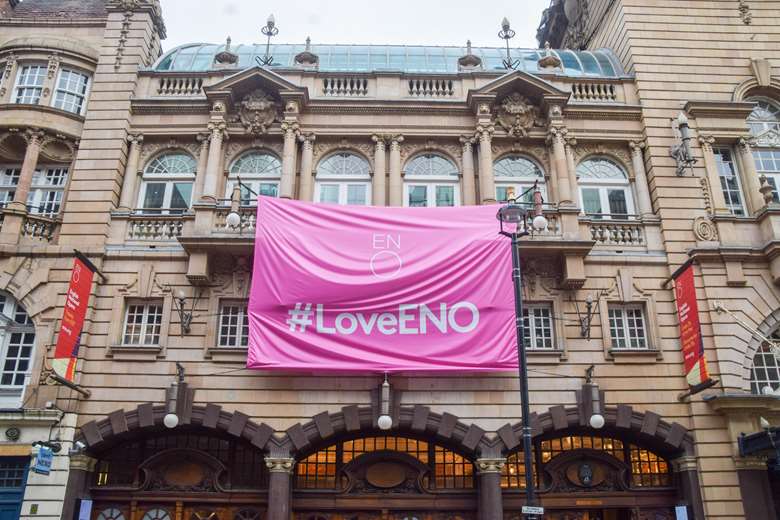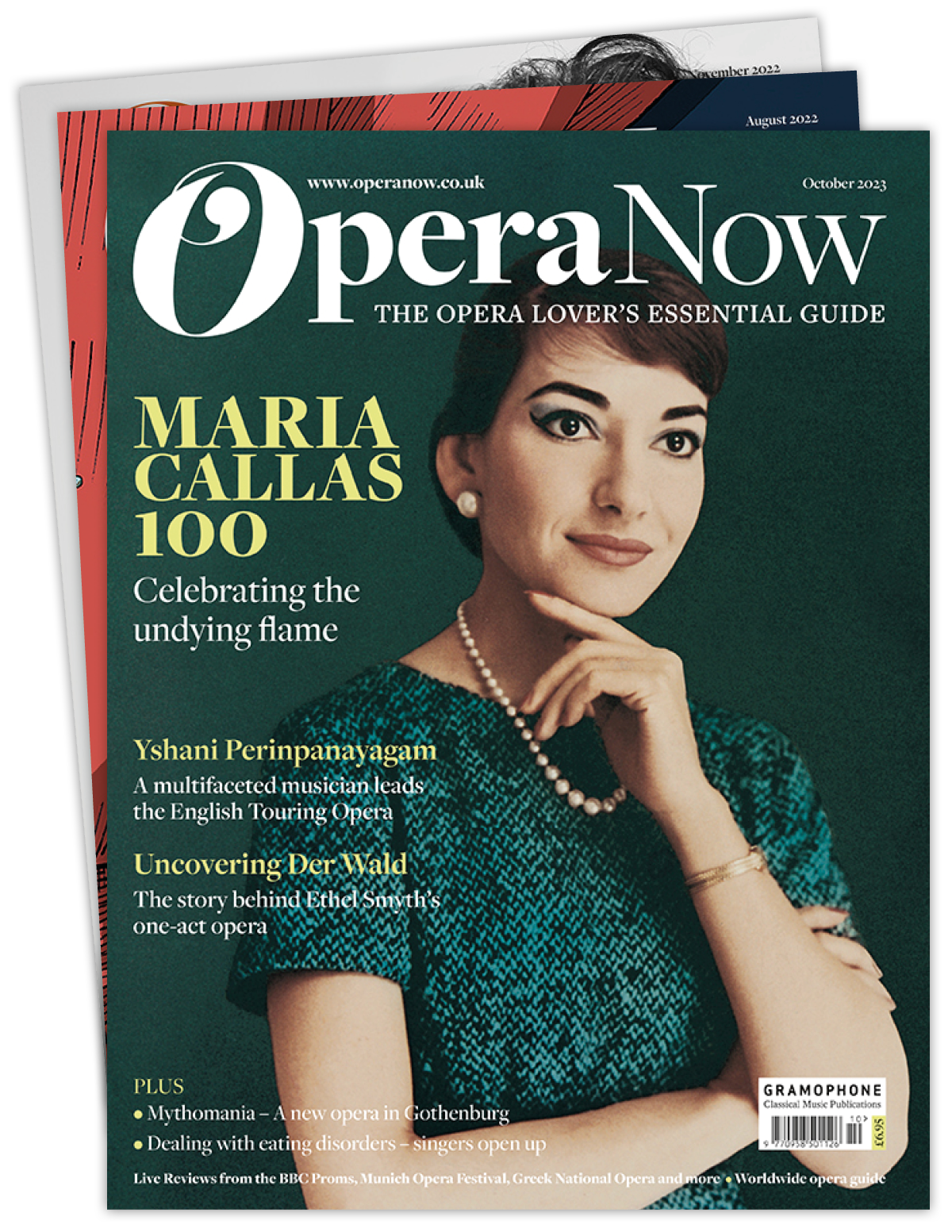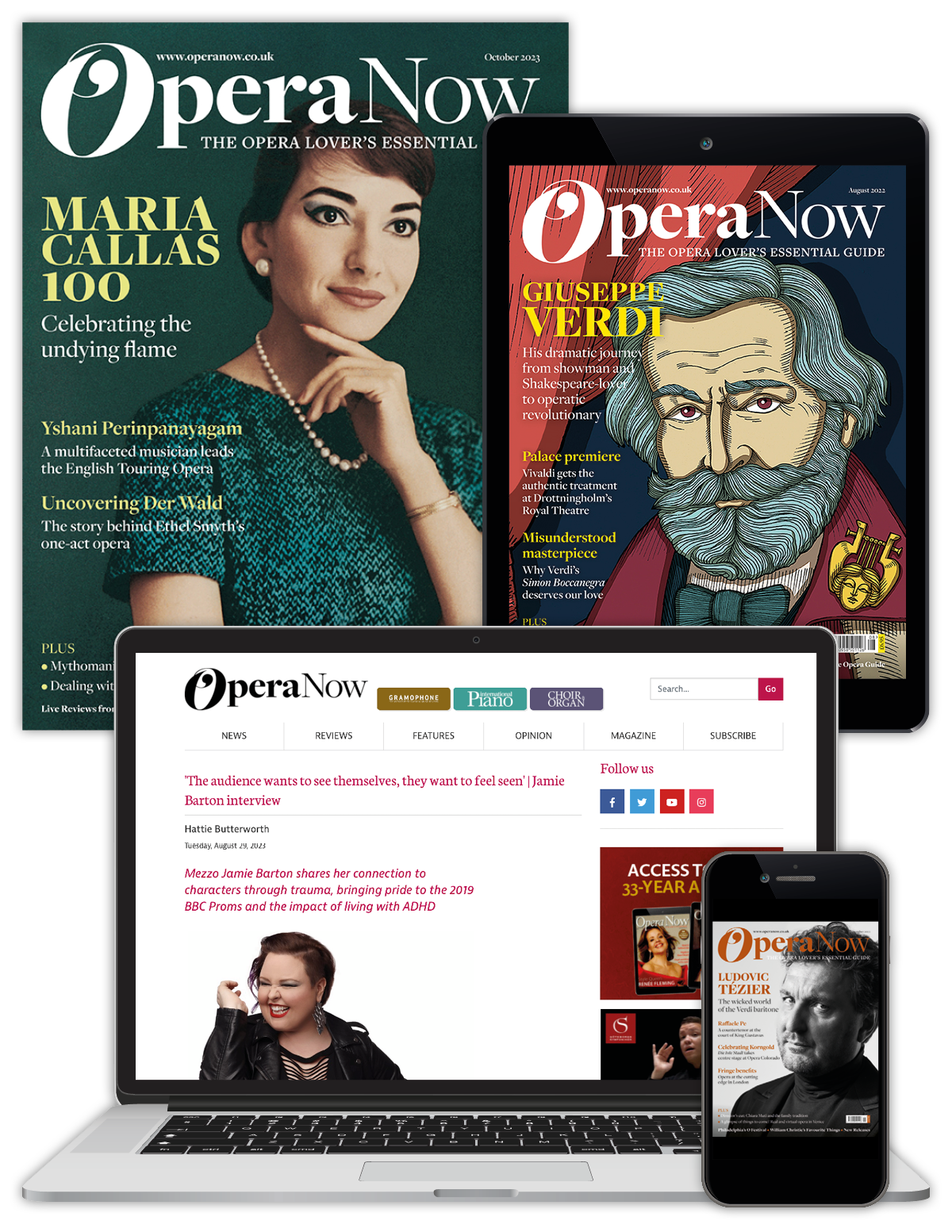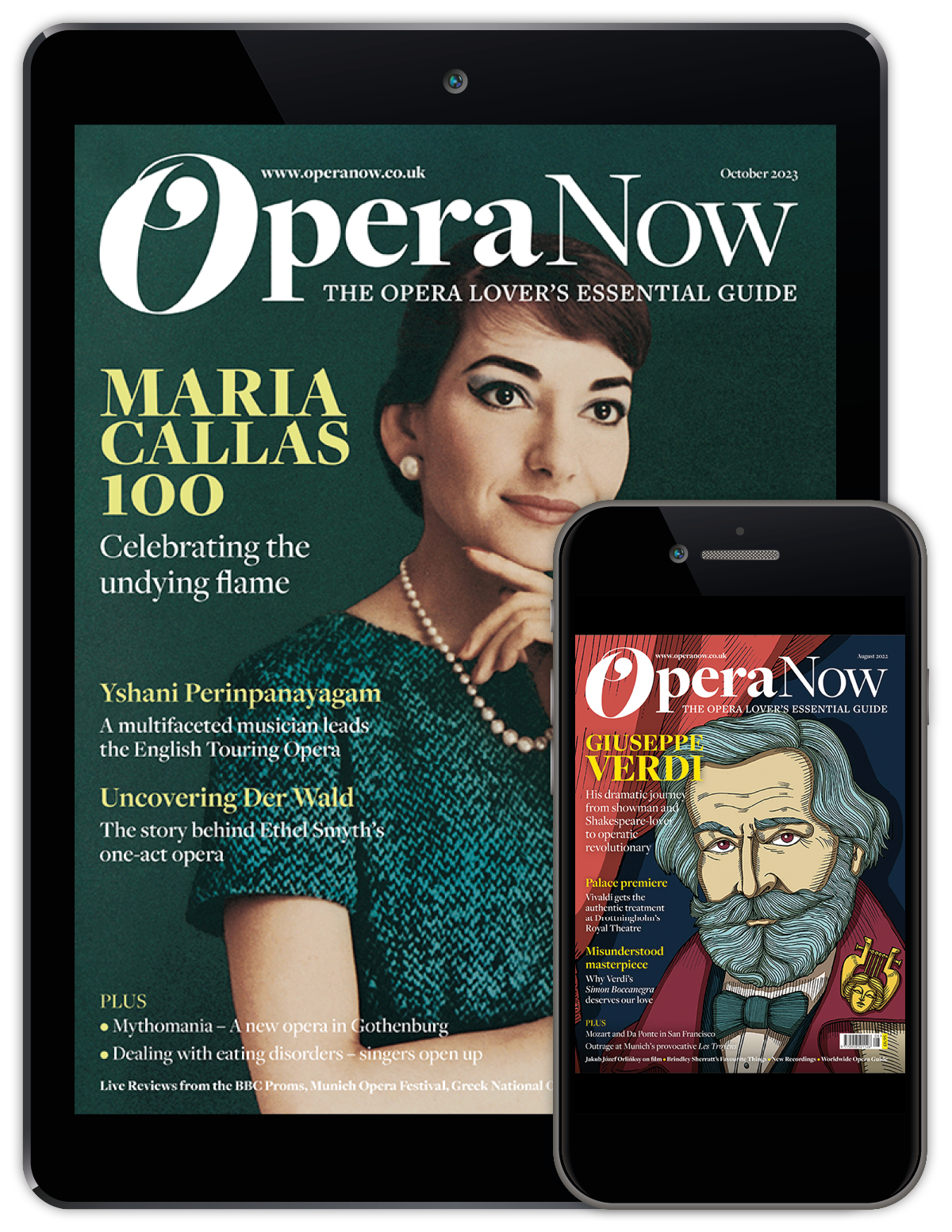Language, drama and power: opera companies and an obsession with English translation
Monday, February 5, 2024
Soprano Claire Booth presents her research into opera in the English language, asking whether it crosses the barrier to accessibility that companies have us believe

'Audiences experience greater enjoyment of art when they grasp its meaning’.
While perhaps not entirely worth the £15,000 spent on my recent MA degree in arts policy and management, the academic Paul Silvia’s somewhat obvious conclusion points at something fundamental to all of us involved in the creative sector – how do audiences understand the culture around them? In terms of opera and given this article’s focus on translation the answer might seem clear… but we live in very different times to Richard Wagner, and the sector’s continued predilection for translating opera as a means of increasing both audience numbers and access against a backdrop of funding issues, heightened cultural sensitivities and technological advances might be worth a reappraisal. After all, right now English National Opera has some serious thinking to do.
The practice of translating opera goes back almost as far as the genre itself – Charles II’s restoration court encouraged English performances of European repertoire in tandem with the English court masque tradition, and the relationship between the vernacular and an initially Italian-dominated artform has always been contentious. Mozart’s adaptation of Schikaneder’s German libretto into Die Zauberflöte is accepted as a direct response to the dominance of Italian opera in Vienna, as is John Gay’s British masterpiece, The Beggar’s Opera, written to counter ‘adopted’ composers such as Handel who wrote opera overwhelmingly – though not exclusively – in Italian. However, so superior was Italian opera still considered in 19th century Britain, that although Verdi’s Ernani was translated into English in 1845 for its London premiere, composers such as Balfe often translated their own works back into Italian to ensure a British performance. One might say this linguistic snobbery was only – even partially – overturned when Britten, Tippett and others re-established English language opera as an international cultural product in the mid-20th century; ironically the time when London’s Royal Opera moved towards original language presentation so as to attract international artists unprepared to learn roles in translations of limited use. Indeed, both the musical and social capital connected with original language performances remains a hotly debated topic.


Welsh National Opera’s recent translation of Mozart’s The Magic Flute frustrated some with its combination of casual and traditional language | Credit: Craig Fuller
Widely held as the strongest means of democratising the art form, the 20th century fashion for translated performances coincided not only with Wagner’s darkened auditoriums, but with growing philanthropic desire to broaden access to the art form, exemplified in the UK by the work of Lilian Baylis, the emergence of ENO and indeed the founding principles of the Arts Council: ‘great art, everywhere, for everyone.’ Former ENO Artistic Director Mark Wigglesworth has argued that understanding sung text at the point of reception provides greater immediate comprehension: I don’t disagree. As a performer, you want your audience to understand you: but let’s be honest – they’ve got to hear the words in the first place.
ENO’s own decision to employ English surtitles in 2005 proved contentious, with former AD David Pountney momentously describing them as ‘a celluloid condom inserted between the audience and the gratification of understanding’. We’ve come a long way since 1983, when the introduction of surtitling by the Canadian Opera Company first heralded a global sea-change in comprehensibility. Yet surtitles themselves complicate debates over access and understanding. They’re not a total panacea, as ROH’s Oliver Mears admits: ‘I always get irritated when I see surtitles that have exclamation marks, because it absolutely directs the audience towards experiencing an emotion which should be completely articulated by what’s on stage and in the music’. However, they clearly offer greater flexibility of idiom and scansion than sung translations, and whether sur- or subtitles; they’re ubiquitous in screen media across the board: my children even watch content in English with subtitles on. As Jonathan Burton states, ‘We are now a text-dominated society, and audiences expect to know in detail what words are being sung, as they would for the dialogue in a subtitled foreign film’. The trend of pop music towards more diverse music consumption no longer systematically in the English language (hits such as Luis Fonsi’s Despacito or the success of bilingual artists like Florence and the Machine) points towards audiences supportive of linguistic diversity, with enjoyment transcending complete textual comprehension. If popular screen and pop culture can demonstrate contentment with diverse languages, surely opera can too? And should?
Over and above the opera house itself as an architectural reminder of western culture’s imperial reach, debates around productions of Madame Butterfly or arguments over the use of black face makeup in Aida prove the sector is no stranger to controversies over the ‘what’ and ‘how’ of repertoire. However, language arguably plays a role too. Robert Phillipson, an academic who’s work centres upon linguistic imperialism, speaks of the ‘global tyranny of English’. Indeed, language has been used historically to reframe culture, not only throughout British imperialism, but in broader rises of nationalist sentiment, such as 1931 laws imposing Spanish as the singing language for all operas performed at Madrid’s Teatro Real, or the German Nazi party’s commissioning of new legally binding translations of Mozart’s da Ponte operas in order to erase the work of Jewish librettist and conductor Hermann Levi. Even recent institutions such as Eurovision have sanctioned rule changes freeing participants from singing in their official language: In 2022, 65% of entries were performed in English, whilst French was not heard at all, somewhat at odds with the universalist principles of the organisation.
'Of the five UK opera houses I collaborated with for my research project, none had asked their audiences what they thought of opera in translation'
While courses such as TESOL (Teaching English to Speakers of Other Languages) continues to spread the English language throughout the global south, the proliferation of these programs even inside continental Europe is prescient. Western opera libretti are written overwhelmingly in European languages, with common UK practice translating works by Eastern European composers into English, despite acknowledgement that their musical structures often derive from native language inflections. While ENO breaks with company practice to present Philip Glass’s Akhenaten and Satyagraha in their original multi-lingual form, would they do the same for Janáček? The company’s relationship with English isn’t – and perhaps shouldn’t be – sacrosanct, yet its decision to honour original language in Glass’s operas seems highly connected to a potential linguistic imperialism on a North-South axis. Fascinatingly, audiences are questioning the role of language, such as this recent Welsh National Opera feedback: ‘Is translating opera works an act of cultural imperialism or colonialism? Opera is not like theatre because words are an integral part of the music. Translating them could mean appropriating them’.
The performance of opera in translation is underpinned by the government’s current ‘levelling up’ agenda to ‘create opportunities for everyone across the UK’. Broadening pathways to traditionally elitist forms of culture are important manifestations of this policy, supported by international legal recognition of the human right to access arts and media.
The work of ENO, and its later sister company Opera North, historically increased access to operatic culture, and when done well, the practice can still result in facilitating a bond between performers and English speakers. But what might original language opera offer us? Not only the original work, as its creator intended, but in today’s world, opportunities for learning and understanding. Opera companies often use translations as the perfect vehicle for introducing and encouraging children into the world of opera – look at the Royal Opera House’s recent Hansel und Gretel, part of their new family strand. However, some, like composer Julian Phillips have explored opera’s potential precisely as an educational language tool through his participatory work Henny Penny. Itself an internationally recognised folk tale, the opera was composed specifically to be performed by primary school children in a range of languages, with the ‘embodied and rhythmic nature of operatic performance [enabling] swifter embedding of language learning’. Massenet’s Cendrillon, Humperdinck’s Hänsel und Gretel, Birtwistle’s Minotaur: it’s precisely the universality of these stories which could render them perfect vehicles for exposing audiences of any age to original language opera.
Artistic Directors often speak about the importance of translation when presenting operas with dialogue, and especially comedic dialogue, born out in Scottish Opera’s recent production of Carmen, and WNO’s reinterpretation of The Magic Flute. But look at the success of Glyndebourne’s Les Mamelles di Tiresias – French opera, French singers, French text, French director: the audience loved it, and proof if needed, that with the right creative team language is no barrier to comprehension.
So, back to Silvia, and how do we ascertain meaning in opera? Well, luckily for audiences, opera is a hybrid form encompassing a combination of arts (orchestral music, vocal music, libretti, staging, drama), artists (composers, librettists, directors, producers, singers, designers, orchestral players) and texts (score, libretto, programme notes). Meaning is also conveyed through multiple modes of communication: visual, aural and verbal. Arguably, our preoccupation with performance language as the primary means of accessibility denies audiences the agency to appreciate the communicative capacities of all the rest: music, sound, imagery, gesture, surtitles and most importantly the human voice itself.
'If popular screen and pop culture can demonstrate contentment with diverse languages, surely opera can too? And should?'
Afterall, multilingualism is inherent in opera; exemplified by Mozart’s Le Nozze di Figaro (a French story, set in Spain, sung in Italian, presented to Germans), prevalent within operas such as Stravinsky’s Oedipus Rex or Glass’s Akhenaten, and through international creative teams. Last year, research by academic Lauren Miller into the Australian opera sector concluded that linguistically diverse work is neither inherently elitist, nor inaccessible, and ‘doesn’t deter audience engagement’. The UK opera sector shouldn’t assume that an audience’s preferred language for opera is English, or that those ‘new’ to opera necessarily need or prefer English sung translations, given the presence of surtitles. Crucially, it’s audiences, not academics who are pointing out the additional benefits of original language work: recent feedback proposing that ‘not exposing the audience to original language might make individuals culturally less open to difference.’
And the data bears this out. Of the five UK opera houses I collaborated with for my research project, none had asked their audiences what they thought of opera in translation, despite making financial and creative decisions over repertoire, commissioning translations, devising concepts, casting singers, based on assumptions that it's what people want. What do they want? The Arts Council talks about accessibility and understanding; audiences talk about enjoyment and escapism. The growth of experiential rather than passive receptivity of art might encourage companies to ‘draw the consumer into the process’, but does the prospect of opera in translation motivate people to buy tickets? Of 25,000 surveys sent out by ROH, SO, WNO, ENO and ON, only 7% of aggregated responses were even partially influenced by the prospect of opera in translation. In a starker assessment, the study revealed only 1% of aggregated UK respondents listed English translation as their primary motivation. This contrasts with original language performance, which actively motivates audiences to attend – with figures as high as 60%. Himself an advocate of translated opera, Mears acknowledges foreign languages are central to the ROH experience, as ‘part of the seduction of opera… that there’s this mystery, lyricism and wonder attached to the language itself’.
Throughout the data gathered, audiences questioned whether sung translations were necessary in an age of surtitles and observed that poor diction generally necessitated surtitles even with sung translations: ‘Had it not been for the supertitles I’d have had no idea what was being sung in large parts, despite it being in English’. Many hadn’t even been aware performances would be sung in translation. Admittedly, once inside the theatre, it’s a more positive story: 34% of aggregated respondents agreed that English translations had enhanced their enjoyment of the opera inside the theatre. Yet, that means over 60% were indifferent to, or actively disliked its effect upon the performance. While positive qualitative feedback focussed on comprehension, negative responses referred to English translation as dumbing down stories, patronising audiences and changing meanings. They preferred to watch an unadulterated cultural product, with surtitles for additional comprehension if necessary.
There’s a potentially dangerous disconnect between belief and reality regarding the power of translated opera in the world we now inhabit. While we’re all passionate about bringing brilliant operas to brilliant audiences, company decisions around performance language seem to reflect 20th century accessibility narratives, without listening to 21st century audiences who reflect and enjoy multiculturalism and accept surtitles as an appropriate medium for understanding foreign text. Crucially, neither want the experience to be compromised. As one respondent said of WNO’s recent Magic Flute: ‘If you are going to bring it into the vernacular, it must be consistent. This had people calling others “mate” and then singing “farewell” in another scene’. As a performer, I absolutely believe there’s a place for translated work; but my initial research suggests that in order for the public to gain true benefit, decisions around audience experience, repertoire, production concept, casting, marketing and even venues need increasingly careful consideration and an ability to honestly answer the question ‘why translate?’ ENO used to assert that ‘opera in English speaks for itself’: audiences seem to disagree.
Claire Booth is an English soprano. Her research into opera in the English language came out of an MA in Arts and Cultural Management from Kings College London | claire-booth.com






